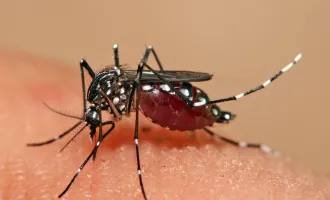
Photo by Zdeněk Macháček on Unsplash
This Date in UCSF History: Activists ‘Free’ Lab Mice
Originally published in Synapse on April 29, 1999. Small groups of animal rights activists raided the Cell Culture Facility and two nearby labs on Friday morning, April 23, overturning equipment, frightening employees, and causing thousands of dollars worth of damage.
During a confrontation with neurology researchers on the fourth floor of HSE, the raiders apparently released four mice from their cages.
Two of the mice had been infected with scrapie, a transmissible spongiform encephalopathy occurring in sheep and goals.
The chance of scrapie being transmitted to other animals was minimized by Ara Tahmassian, UCSF assistant vice chancellor for research services.
“A cat would have to eat hundreds and hundreds of infected mice before there would be any chance of transmission,” says Tahmassian.
“There is no danger of transmission to humans,” states Bill Gordon of UCSF News Services.
Three of the alleged perpetrators were identified as they massed later in the morning with some 40 fellow activists on Parnassus Ave.
They were arrested and charged with burglary and felony trespass, with bail set in excess of $70,000.
But on Monday, April 26. charges against the three were reduced to misdemeanor trespass and they were released on their own recognizance.
District Attorney Terence Hallinait told Synapse the charges were reduced by the San Francisco police because the evidence against the three was circumstantial — nobody saw them in the act of releasing the mice from their cages.
The protestors had come to campus in connection with “World Week for Animals in Laboratories” — a set of demonstration organized annually by In Defense of Animals and allied groups.
According to Rick Bogle of IDA, the raids on the UCSF labs were “spontaneous.”
Noticing that the Medical Center Way was unguarded, about 20 people headed up the hill to see if they could gain access to labs, Bogle said.
After an initial confrontation at the Cell Culture Facility, the demonstrators split into smaller groups and attempted to enter other labs.
Tahmassian says they tried the doors of “10 or 11” labs and gained access to two.
The lab from which the mice were released had been developing a test to confirm the presence of spongiform encephalopathies.
The loss of the infected mice may delay their research by three months, says Tahmassian.
Pomp and Acrimony
It was only after the raids — when the demonstrators had assembled in front of Moffitt Hospital — that they learned that J. Michael Bishop was due to be inaugurated as UCSF chancellor at 2 p.m. in the Millberry Union gym.
Seven animal rightists then made arrangements to attend, according to Bogle — six to heckle, one to observe.
The presence of the protestors induced the organizers of the inauguration to change the route by which participants approached the gym.
Bishop, the regents, and their guests, who had donned their gowns and eaten lunch on the fifth floor of the library, proceeded to Millberry via the garage (instead of on sunny Parnassus).
Faculty members and others who had assembled in the Medical Sciences lobby walked through the Moffitt lobby before crossing Parnassus.
Students representing the various schools carried banners and led the procession.



